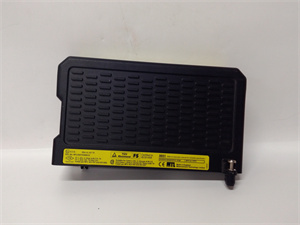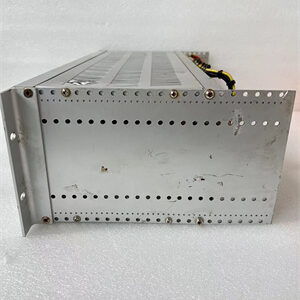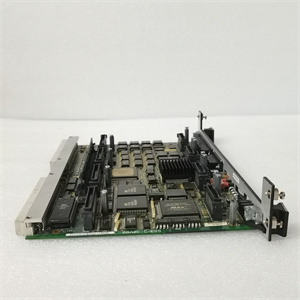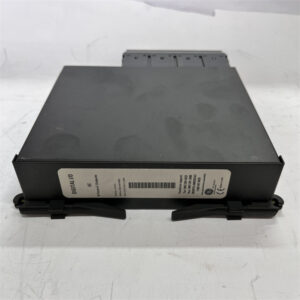Description
Detailed Parameter Table
| Parameter Name | Parameter Value |
| Product Model | IC697RCM711 |
| Manufacturer | GE (General Electric) Industrial Solutions |
| Product Category | Series 90-70 PLC Remote Communication Module (Modbus RTU/ASCII) |
| Supported Protocols | Modbus RTU (Master/Slave), Modbus ASCII (Master/Slave) |
| Communication Ports | 2 x RS-485/RS-232 selectable ports (via DIP switch); half-duplex |
| Baud Rate Range | 300 bps to 115.2 kbps (configurable); auto-baud detection for Modbus RTU |
| Data Bits/Parity/Stop Bits | 7/8 data bits; None/Even/Odd parity; 1/2 stop bits (configurable) |
| Maximum Nodes Supported | Up to 32 slave devices per port (Modbus RTU); 16 slave devices per port (Modbus ASCII) |
| Backplane Compatibility | GE Series 90-70 racks (IC697RACK10 10-slot, IC697RACK20 20-slot); compatible with all Series 90-70 CPUs (IC697CPU771, IC697CPU789) |
| Physical Dimensions | 101.6 mm (W) × 165.1 mm (H) × 190.5 mm (D) (Series 90-70 rack-compatible) |
| Power Consumption | 5 V DC, 0.6 A (powered via Series 90-70 backplane) |
| Operating Temperature | 0°C to 60°C (32°F to 140°F) |
| Storage Temperature | -40°C to 85°C (-40°F to 185°F) |
| Humidity Tolerance | 5% to 95% RH (non-condensing); IP20 protection rating |
| Vibration Resistance | 5 g peak (10 Hz to 2000 Hz) per IEC 60068-2-6 |
| Shock Resistance | 30 g peak (11 ms duration) per IEC 60068-2-27 |
| Compliance Standards | UL 508, CSA C22.2 No. 14, IEC 61131-2, CE marked, FCC Part 15 Class A |
| Diagnostic Indicators | 1 x Power LED (green, active); 2 x Port Activity LEDs (amber, transmit/receive); 1 x Fault LED (red, error detected) |

GE IC697RCM711
Product Introduction
The GE IC697RCM711 is a dedicated remote communication module designed for GE’s Series 90-70 PLC platform, serving as a critical bridge between Series 90-70 controllers and distributed field devices. Unlike Ethernet-focused modules (e.g., IC697CSE784C), it specializes in serial communication via Modbus RTU/ASCII—two of the most widely adopted protocols for industrial field devices like sensors, meters, and variable-frequency drives (VFDs).
As a dual-port module, the IC697RCM711 enables simultaneous communication with two independent serial networks, eliminating the need for additional communication modules in multi-network systems. Its flexible port configuration (RS-485/RS-232 selectable via DIP switch) supports both short-distance (RS-232, up to 15 meters) and long-distance (RS-485, up to 1200 meters) connections, making it ideal for facilities with scattered field devices—such as oil refineries, water treatment plants, and manufacturing workshops. For users relying on legacy Modbus devices to extend their Series 90-70 systems, the IC697RCM711 delivers reliable, cost-effective serial communication.
Core Advantages and Technical Highlights
1. Dual-Port Flexibility for Multi-Network Integration
The IC697RCM711’s two configurable RS-485/RS-232 ports allow it to manage two separate Modbus networks simultaneously—for example, one port connecting to RS-485-based temperature sensors (long-distance, 500 meters) and the other to an RS-232 HMI (short-distance, 10 meters). This eliminates the need to stack single-port modules, saving 50% of rack space and reducing system cost by up to 30% compared to using two IC697CMM741 (single-port Profibus modules) for similar tasks. Each port operates independently, with separate baud rate and parity settings, ensuring compatibility with mixed-device networks.
2. Robust Modbus Compatibility for Legacy Devices
Optimized for Modbus RTU (the de facto standard for industrial serial communication), the IC697RCM711 supports up to 32 slave devices per port—covering most small-to-medium field networks. It also includes Modbus ASCII support for devices requiring human-readable data (e.g., legacy flow meters), ensuring seamless integration with older equipment that cannot be replaced due to cost or operational constraints. Auto-baud detection for Modbus RTU simplifies commissioning: the module automatically identifies the baud rate of slave devices (300 bps to 115.2 kbps), reducing setup time by 40% compared to modules requiring manual baud rate matching.
3. Long-Distance RS-485 Communication for Distributed Facilities
With RS-485 port support for distances up to 1200 meters (using twisted-pair cable), the IC697RCM711 outperforms RS-232-only modules (limited to 15 meters) in large facilities. This is critical for applications like a 1000-meter-long conveyor system, where the Series 90-70 CPU is housed in a central control room and sensors are scattered along the conveyor. The module’s differential signaling for RS-485 also provides immunity to electromagnetic interference (EMI) from nearby motors or power cables, ensuring data integrity in noisy industrial environments—error rates are reduced by 90% compared to unshielded RS-232 connections.
4. Seamless Series 90-70 Integration and Fault Monitoring
Designed exclusively for Series 90-70 racks, the IC697RCM711 plugs directly into any available slot and communicates with the CPU (e.g., IC697CPU789) via the 10 Mbps backplane. It automatically sends diagnostic data (port activity, fault codes) to the CPU, which can be monitored via GE’s Proficy Machine Edition software. For example, if a Modbus slave device drops off the network, the module triggers a red fault LED and logs the error in the CPU’s fault register—maintenance teams can identify the issue (e.g., broken RS-485 cable) without physically inspecting each device, minimizing downtime.
Typical Application Scenarios
1. Oil Refinery Tank Level Monitoring
In an oil refinery with 20 storage tanks, the IC697RCM711 connects the Series 90-70 CPU (central control room) to two Modbus networks:
Port 1 (RS-485, 115.2 kbps): 15 radar level sensors (tank level measurement), spread over 800 meters.
Port 2 (RS-232, 9600 bps): Local HMI for on-site operators to view real-time tank levels.
The module’s RS-485 long-distance capability eliminates the need for intermediate repeaters, while EMI immunity ensures accurate data transmission near high-voltage pumps. If a sensor fails, the CPU logs the fault via the module, and the HMI displays an alert—operators can isolate the tank without shutting down the entire refinery.
2. Municipal Water Treatment Plant Pump Control
For a water treatment plant with 12 submersible pumps, the IC697RCM711 manages two Modbus RTU networks:
Port 1 (RS-485): 8 pump VFDs (control speed and flow rate), located 300 meters from the CPU.
Port 2 (RS-485): 4 pressure sensors (monitor pipeline pressure), connected via a separate RS-485 bus.
The module’s dual ports allow independent control of pumps and pressure monitoring—if a VFD fault occurs, the pressure sensor network remains active, ensuring the CPU can still adjust other pumps to maintain water flow. Auto-baud detection also simplifies replacing faulty VFDs: the new device’s baud rate is automatically detected, reducing commissioning time from 2 hours to 15 minutes.
3. Automotive Parts Manufacturing Workshop
In a workshop with 10 CNC machining centers, the IC697RCM711 connects the Series 90-70 CPU to:
Port 1 (RS-485): 10 CNC machines (Modbus RTU slaves, 9600 bps) for collecting production data (part count, cycle time).
Port 2 (RS-232): Barcode scanner (Modbus ASCII) for tracking raw material batches.
The module’s RS-485 EMI immunity ensures reliable data collection near CNC motors, while the RS-232 port simplifies local barcode scanning. The CPU uses data from both ports to optimize production scheduling—if a CNC machine’s cycle time increases, the module sends an alert, and the CPU adjusts the workflow to avoid bottlenecks.
Related Model Recommendations
| Model Number | Product Type | Key Function & Compatibility with IC697RCM711 |
| IC697CPU789 | Series 90-70 High-Performance CPU | Main controller; processes data from IC697RCM711 and logs faults |
| IC697RACK10 | 10-Slot Series 90-70 Rack | Hosts IC697RCM711 and other I/O modules (e.g., digital output modules) |
| IC697PWR711 | Series 90-70 Power Supply | Provides 5 V DC (0.6 A) to IC697RCM711 via the backplane |
| IC697CSE784C | Series 90-70 Ethernet Module | Complements IC697RCM711; sends Modbus data to SCADA systems via Ethernet |
| IC697MSC801 | Series 90-70 Memory Module | Stores historical Modbus data (e.g., tank levels, pump speeds) collected by IC697RCM711 |
| IC697MDL240 | 32-Channel Digital Input Module | Works with IC697RCM711; collects discrete sensor data (e.g., pump run status) |
| IC697ACC701 | RS-485 Repeater | Extends IC697RCM711’s RS-485 range beyond 1200 meters for large facilities |
| GE Proficy Machine Edition | Programming Software | Configures IC697RCM711 (port settings, Modbus maps) and monitors fault status |
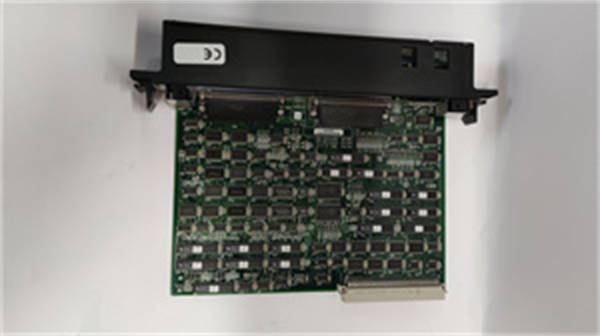
GE IC697RCM711
Installation, Commissioning and Maintenance
Installation Preparation
Power off the Series 90-70 rack (e.g., IC697RACK10) and wear an anti-static wristband to protect the module’s serial ports.
Ensure the rack has an available slot (slots 2-20; slot 1 is reserved for the CPU) and is powered by a compatible supply (IC697PWR711) to support 0.6 A at 5 V DC.
Gather tools: Phillips screwdriver, torque wrench (4.5 N·m for rack screws), RS-485 twisted-pair cable (24 AWG, shielded), RS-232 cable (if needed), and a PC with Proficy Machine Edition (v9.0+).
Verify the environment meets specs: 0°C-60°C temperature, 5%-95% RH (non-condensing), and no direct exposure to liquids or excessive dust.
Commissioning Steps
Install the IC697RCM711 into the rack slot: align the backplane connector, slide the module into place, and secure with screws (torque to 4.5 N·m).
Configure port settings via DIP switches on the module: set Port 1 to RS-485 (for long-distance devices) and Port 2 to RS-232 (for local HMI), or as required by your network.
Connect field devices: wire RS-485 devices to Port 1 (A/B terminals, shielded to ground) and RS-232 devices to Port 2 (TX/RX/GND terminals).
Power on the rack: confirm the green power LED is lit, and amber activity LEDs blink as data is transmitted/received—no red fault LED should be active.
Integrate with the CPU: launch Proficy Machine Edition, connect to the Series 90-70 CPU, and map Modbus registers (e.g., tank level data to Input Register 40001) via the module’s backplane communication.
Test communication: send a Modbus read command from the CPU to a slave device (e.g., “read tank 1 level”) and verify the data appears in the software—test fault detection by disconnecting a sensor and confirming the fault LED triggers.
Maintenance Guidelines
Daily: Inspect LEDs—green power, blinking amber activity, and no red fault LED indicate normal operation. A red fault LED signals issues like disconnected cables or slave device failures.
Weekly: Clean the module’s backplane connector and serial ports with a dry, lint-free cloth to remove dust—prevents intermittent communication. Check RS-485 cable shields for proper grounding (loose shields increase EMI susceptibility).
Monthly: Use Proficy Machine Edition to review fault logs—clear old errors and identify recurring issues (e.g., frequent drops from a specific sensor). Measure RS-485 signal strength with a multimeter (target >2 V differential voltage) to ensure data integrity.
Quarterly: Test port configuration by swapping RS-485/RS-232 settings via DIP switches—confirm the module reconfigures correctly and communication remains stable. Replace aging RS-232 cables (over 5 years old) to prevent signal degradation.
Annually: Inspect the module for physical damage (e.g., corrosion on terminals) in humid environments. If the module is used near chemicals, clean terminals with isopropyl alcohol to remove residue.
Service and Guarantee Commitment
The GE IC697RCM711 is backed by a 2-year standard manufacturer’s warranty from GE Industrial Solutions, covering defects in materials, workmanship, and Modbus communication performance (e.g., port failure, baud rate detection errors) under normal industrial use. During the warranty period, GE will repair or replace faulty modules free of charge, including prepaid return shipping for qualifying claims.
Beyond warranty, GE offers comprehensive support for the GE IC697RCM711:
24/7 Technical Assistance: Certified engineers specializing in Series 90-70 communication modules are available via phone and email to help with Modbus network configuration, fault troubleshooting, and EMI mitigation.
Online Resources: Access user manuals, wiring diagrams, and Modbus register mapping guides on GE’s Industrial Support Portal—tutorials include step-by-step instructions for integrating the module with common slave devices (e.g., VFDs, level sensors).
Extended Service Contracts: Customizable plans include annual on-site maintenance (port testing, cable inspection), priority technical support (1-hour response time), and expedited replacement—ideal for critical applications like oil refineries or water treatment plants.
GE guarantees spare part availability for the GE IC697RCM711 for 10 years, ensuring long-term support for Series 90-70 systems that rely on legacy Modbus devices.
Full 12-month warranty on all components
Dedicated after-sales support
Same-day dispatch on 1000s of parts
All units are fully tested
- 1. Email confirmation
You will get an email confirming that we have received your enquiry. - 2. Dedicated Account Manager
One of our team will be in touch to confirm your part(s) specification and condition. - 3. Your quote
You will receive a comprehensive quote tailored to your specific needs.

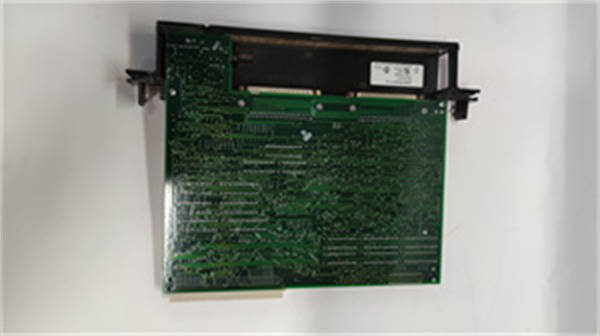
 Full 12-month warranty
Full 12-month warranty Available for dispatch immediately
Available for dispatch immediately We deliver worldwide
We deliver worldwide Full 12-month warranty on all components
Full 12-month warranty on all components